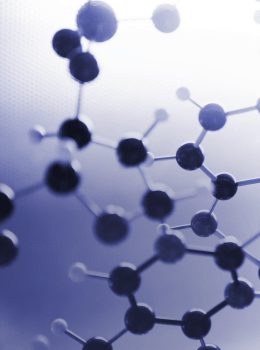
Feature article
John Dalton remembered
![Thumbnail [Thumbnail]](https://www.iucr.org/__data/assets/image/0007/157858/thumbnail.jpg)
John Dalton. © Science Museum Group, used with permission.
John Dalton was a pioneer in modern science. Whenever his name is mentioned, we think of his atomic theory and color blindness ('Daltonism') but seldom of his contribution to crystallography. His ideas about packing in water and in ice were most forward-looking.
When in the years 1983−1985 we were working on our book Symmetry through the Eyes of a Chemist in English (its first edition) [1], we found the development of the ideas of dense packing most fascinating. This was something that had hardly interested us before because our principal research was in gas-phase molecular structures where packing was not a subject of consideration. After Lucretius and Johannes Kepler, we enjoyed Dorothy Hodgkin's essay 'Moments of Discovery', referring to the crystallographer John Dalton in a collection of papers in Kristallografiya honoring Boris K. Vainshtein [2].
![[Figure1]](https://www.iucr.org/__data/assets/image/0004/157837/figure1.jpg) Figure 1. Dalton's models for water (1 and 3) and for ice (2, 4, 5 and 6) in his book A New System of Chemical Philosophy ([3], p. 128, plate III).
Figure 1. Dalton's models for water (1 and 3) and for ice (2, 4, 5 and 6) in his book A New System of Chemical Philosophy ([3], p. 128, plate III).
Hodgkin called attention to the remarkable difference between the packings in liquid water and ice manifested in Dalton’s 1808 treatise (Fig. 1). Dalton's idea was that the building elements in solid ice are more densely packed than in liquid water. Hodgkin showed the reappearance of Dalton’s ideas in the model of the atomic arrangement in the 2Zn–insulin crystal [2]. The molecular structure of insulin is very complicated, but the molecular packing, especially the arrangement of the insulin hexamers, reminded her of Dalton's hexagonal ice.
![[Figure2]](https://www.iucr.org/__data/assets/image/0005/157838/figure2.jpg)
![[Figure3]](https://www.iucr.org/__data/assets/image/0006/157839/figure3.jpg)
In the third edition of our Symmetry through the Eyes of a Chemist [5], we included another representation of the close packing of spheres from John Dalton (Fig. 2) [4] and a photograph of a close-packed arrangement of cannon balls (Fig. 3) ([5], p. 422).
![[Figure4]](https://www.iucr.org/__data/assets/image/0007/157840/figure4.jpg)
![[Figure5]](https://www.iucr.org/__data/assets/image/0008/157841/figure5.jpg)
John Dalton’s (1766−1844; Figs. 4 and 5) oeuvre has been treated extensively in the literature and in chemistry texts. We single out the monograph by William C. Henry, which appeared in 1854 and is freely accessible [6]. Following a brief biographical introduction ([7], p. 106), we present a sampler of memorials to John Dalton in the remainder of this communication. It is far from complete and is meant to indicate his international recognition.
![[Figure6]](https://www.iucr.org/__data/assets/image/0009/157842/figure6.jpg) Figure 6. John Dalton's memorial plaque at his birthplace in Eaglesfield (photograph taken by Graham Robson, reproduced under the Creative Commons Attribution-ShareAlike 2.0 license). There is a similar plaque on the wall of the Ape and Apple pub on John Dalton Street in Manchester. Yet another Dalton memorial plaque is on the wall in the offices of the Manchester Literary and Philosophical Society. Dalton was its president from 1816 to 1844.
Figure 6. John Dalton's memorial plaque at his birthplace in Eaglesfield (photograph taken by Graham Robson, reproduced under the Creative Commons Attribution-ShareAlike 2.0 license). There is a similar plaque on the wall of the Ape and Apple pub on John Dalton Street in Manchester. Yet another Dalton memorial plaque is on the wall in the offices of the Manchester Literary and Philosophical Society. Dalton was its president from 1816 to 1844.
Dalton was born in Eaglesfield in Cumberland, England (Fig. 6). His parents could not afford to give him a formal education, but he was precocious in self-study, and already at the age of 12, he was teaching at a village school. This was followed by a series of teaching positions and sometimes even school principal positions. He landed a tutorship in mathematics and philosophy in 1793 at the New College of Manchester. It was about this time that he published his first book on meteorology. Other books followed, including one on the familial condition of color blindness, eventually called 'Daltonism'.
He investigated the properties of gases and discovered the Law of Partial Pressures. He is best known for his atomic theory and his charts of atomic weights. He described his theoretical findings in A New System of Chemical Philosophy, published in 1808 [2] and appended in 1810. His theoretical discoveries helped the chemical industry establish the correct proportions of the component elements in the compounds being produced.
He was a Quaker, and his modesty made him decline the Fellowship of the Royal Society; although C. Turner's portrait (Fig. 5) says "Dr DALTON, F.R.S.", Dalton accepted an honorary doctorate from Oxford University.
![[Figure7]](https://www.iucr.org/__data/assets/image/0010/157843/figure7.jpg) Figure 7. Statue of John Dalton by Francis Chantrey (1838) in Manchester Town Hall (photograph taken by the authors).
Figure 7. Statue of John Dalton by Francis Chantrey (1838) in Manchester Town Hall (photograph taken by the authors).
It was a great distinction that, in 1838, his statue was created by the distinguished sculptor Francis Chantrey (1781−1841). It now stands in Manchester Town Hall (Fig. 7), opposite James Prescott Joule's (1818−1889) statue by Sir Alfred Gilbert. It is most appropriate to have the memorials of these two giants of science close to each other as the elderly Dalton was a mentor of the young Joule.
![[Figure8]](https://www.iucr.org/__data/assets/image/0011/157844/figure8.jpg) Figure 8. Stone portrait of John Dalton on the back façade of the former ICI building, Smith Square, London SW1P (photograph taken by the authors).
Figure 8. Stone portrait of John Dalton on the back façade of the former ICI building, Smith Square, London SW1P (photograph taken by the authors).
Imperial Chemical Industries's (ICI) headquarters was opened in 1929 after ICI was formed from the merger of several companies. ICI left the site in the 1990s following the restructuring of the company giant. Eleven stone portraits of distinguished chemists decorate the façades of the former headquarters. Four of them were directly associated with ICI or its predecessor companies: Harry McGowen, Alfred Nobel, Ludwig Mond and Alfred Mond. The other seven were great contributors to chemistry: Joseph Priestley, Henry Cavendish, Antoine Lavoisier, John Dalton (Fig. 8), Justus von Liebig, Marcellin Berthelot and Dmitri I. Mendeleev. Our guidebook Science in London describes the exact location of these stone portraits on the three segments of the façade ([7], pp. 103−110 and 240).
John Dalton's portrait, as an oil painting by Thomas Phillips in 1835, is one of many scientists' portraits in the 300,000-strong collection of the National Portrait Gallery in London, at St Martin's Place, WC2H. The Gallery has been at this location since 1896, but the collection first opened in 1856.
![[Figure9]](https://www.iucr.org/__data/assets/image/0003/157845/figure9.jpg) Figure 9. John Dalton as a low-relief statue on one of the six panels on the front façade of the headquarters of the US National Academy of Sciences (photographs taken by the authors).
Figure 9. John Dalton as a low-relief statue on one of the six panels on the front façade of the headquarters of the US National Academy of Sciences (photographs taken by the authors).
The United States Congress chartered the National Academy of Sciences of the USA (NAS) as an independent institution in 1863 during the American Civil War. Its headquarters were located for a long time at the Smithsonian Institution. Its current headquarters opened in 1924 at 2101 Constitution Avenue, NW. There are six low-relief bronze panels by the sculptor Lee Lawrie located between the windows on the front façade of the headquarters. Three panels are on the left of the entrance and three are on the right. Each panel depicts six scientists (except the middle right, which depicts seven). John Dalton is on the middle-left panel, which displays the following scientists: Humboldt, Dalton, Lamarck, Watt, Franklin and Huygens (Fig. 9). More about the decorations, including these panels, of the headquarters of NAS can be found in [8].
![[Figure10]](https://www.iucr.org/__data/assets/image/0004/157846/figure10.jpg)
![[Figure11]](https://www.iucr.org/__data/assets/image/0005/157847/figure11.jpg)
The above four bas-relief portraits (Figs. 10 and 11) expand the international outlook of our collection of Dalton memorials, but should be considered only as accidental examples that must be a small fraction of Dalton memorials worldwide. The present communication also exemplifies that Dalton's legacy belongs to broader domains in science than how his name is usually associated.
We conclude our presentation with an unusual group picture in which Dalton is depicted as one of the central figures in a large group of scientists and technologists.
![[Figure12]](https://www.iucr.org/__data/assets/image/0006/157848/figure12.jpg)
![[Figure13]](https://www.iucr.org/__data/assets/image/0007/157849/figure13.jpg)
This image of Fig. 12 has quite some literature (e.g. [11] and [12]). There are over 50 men in this image. Careful examination by a science historian has shown that they could never have come together as a group, and the meeting could not have taken place at the Royal Institution. Many distinguished scientists and technologists are in the picture, but many other important scientists are missing, especially in biology, which is hardly represented. The portraits of those presented were copied from other works of art. Thus, Dalton's portrait closely resembles W. H. Worthington's 1823 engraved Dalton portrait (see Fig. 4) with a few minor alterations. The identity of those in Fig. 12 can be determined from the key given in Fig. 13. The period 1807−1808 was George III's reign, who himself was a scientist, although, alas, eventually his mental state prevented continuation of his royal duties. An attractive indication of the popularity of the pioneers of science and technology during the Victorian era was that copies of this group image were available for purchase. Prints of different quality were produced, and they were priced accordingly.
References
[2] Ходжкин, Д. (1981). Кристаллография, 26, 1029–1045.
[3] Dalton, J. (1808). A New System of Chemical Philosophy. Manchester.
[5] Hargittai, I. & Hargittai, M. (2009). Symmetry through the Eyes of a Chemist, 3rd ed. Springer.
[7] Hargittai, I. & Hargittai, M. (2021). Science in London: A Guide to Memorials. Springer Nature.
[8] Hargittai, I. & Hargittai, M. (2023). Eur. Rev. 31, 227–251.
[11] Clow, A. (1956). Ann. Sci. 11, 183–193.
[12] Fara, P. (2001). Endeavour, 25, 91–92.
Istvan Hargittai and Magdolna Hargittai are at Budapest University of Technology and Economics, Hungary.
Copyright © - All Rights Reserved - International Union of Crystallography








